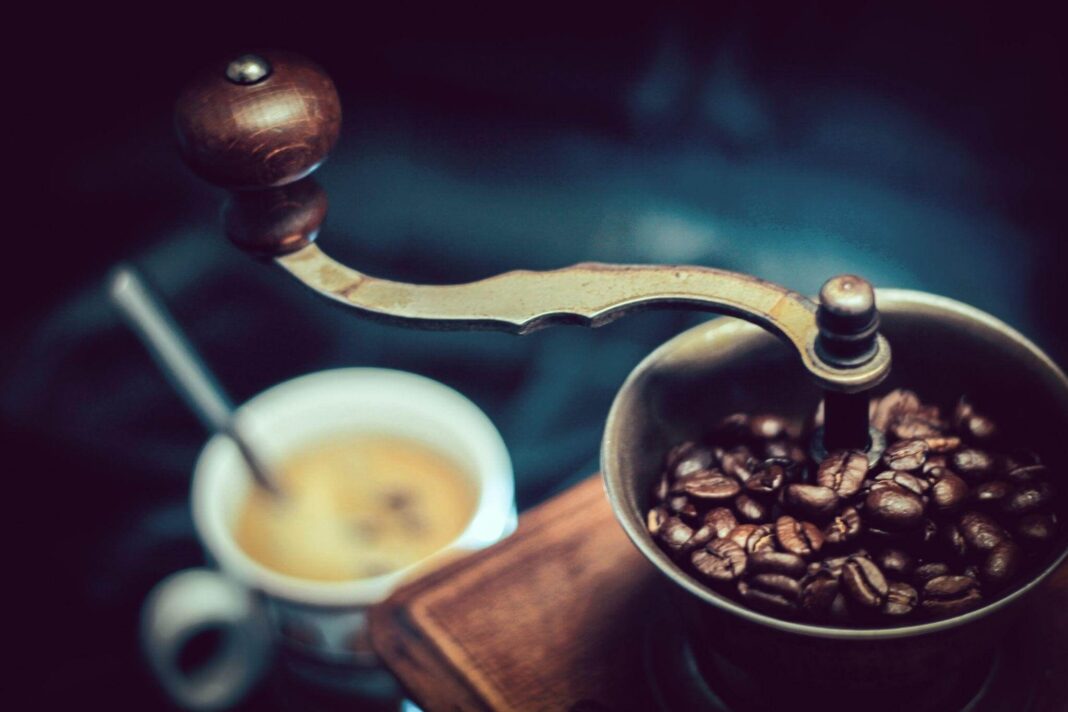You have to agree that freshly prepared foods taste best. Maybe some things do improve with age, like excellent wine. There are certain exceptions, but generally, foods and drinks are at their finest when consumed quickly after being prepared.
This holds true in many ways for your morning coffee as well. How, therefore, do you ensure all the nuanced oils and aromas from your coffee grounds make it into your cup? Keep reading as we explain why grinding and storing your beans properly will yield the best flavor when brewing at home.
Skills in preparation are required for successful coffee grinding. Whether your cup of coffee tastes great or not depends on the grind size. Therefore, the optimal flavor of your coffee can only be achieved by grinding it properly.
In any case, you need not fret. You can make the perfect cup of coffee every time by following the instructions in this article on how to grind coffee beans at home.
Promptly Grind Fresh Coffee Beans
Wait until you’re ready to brew your coffee before grinding the beans so you may pretend you’re a professional barista. The use of freshly ground coffee has a few scientific benefits:
- Once your coffee beans are ground, oxidation will start to happen. Grinding the beans release their natural oils and aromas. Brew your coffee as soon as you’ve ground it to preserve all of the oils.
- The coffee’s flavor can be fine-tuned by grinding the beans just before brewing. When making beans at home, you can adjust the grind’s coarseness to your preference.
Grounds might be coarse or fine, depending on the coffee maker you use. Medium-ground coffee is required for some preparation methods, such as pour-over, whereas coarser grounds are required for espresso machines.
Fresh coffee beans can be ground with a mortar and pestle if you’re in a pinch. True coffee addicts, however, should purchase a grinder for use in their own homes. You can purchase a more expensive and versatile burr grinder or stick with a more basic blade grinder.
Before you go out and buy a coffee grinder without researching what you need it for or how to use it, read up on the subject. Also, only buy high quality coffee beans that come in airtight packaging. The best ones are those which are sealed with the help of an aluminum can seaming machine.
For What Reason Does The Size Of The Grind Matter?
The amount of coffee that is really taken from the grind size during brewing is directly proportional to the amount of coffee that was originally ground.
The coffee’s flavor is absorbed by passing hot water through the grounds. How much flavor the water extracts from the ground is variable.
Coffee’s flavor is diminished if the grind is excessively coarse. The final product will be very acidic and sour. Since the water doesn’t come into contact with enough of the coffee to extract a robust flavor, this is known as “under extraction.”
On the other side, an “over-extraction,” wherein too much of the coffee is extracted, results in an overpowering and bitter taste might occur if the grind is too fine. The amount of time water spends in contact with coffee beans is excessive at this level.
The flavor of your cup of coffee relies on the grind size and the brewing method you use. Definitely you are not making commercial coffee which requires machinery with control valves such those by expert globe valves manufacturer. A perfect brewing method will do the job.
It’s possible that two pots of coffee made from the same beans with the same roast would taste very different from one another.
Coffee Grinding Principles
To get the most out of your coffee grinder and achieve your desired grind size, follow these guidelines:
- When brewing coffee with a percolator or French press, where the hot water will be in contact with the grounds for a significant amount of time, a coarser grind is preferred (usually 2-4 minutes).
- Use a medium grind with a vacuum pot or a drip brewer.
- Medium Grind- Used in espresso machines, French presses, and some drip brewers.
- For the pressure to build, extract all of the flavors, and force the liquid through the filter, the espresso beans must be ground to a fine enough consistency, but not so fine that the filter becomes blocked.
Tips For Keeping Coffee Beans Fresh
Maintaining your coffee beans’ quality, aroma, and freshness through proper storage is vital. Keeping coffee beans safe from the elements, especially air, moisture, heat, and light, is essential, which has led to a few standard practices.
Keeping coffee beans in their original airtight packing or quality glass jam jars wholesale and stowing them away in a pantry is the most common practice.
Nonetheless, the National Coffee Association notes that there are better alternatives to these methods for preserving the quality of your coffee beans. These methods work equally well with whole-roasted beans or freshly ground coffee. Here’s what you need to do:
- Put them away in a container that will keep out light and air. You can safely keep this at room temperature.
- Don’t let them get wet, and make sure they stay in the dark. The oven’s proximity to a cabinet means it will likely get too hot inside.
- You can disregard the coffee’s retail packaging. Long-term storage is not recommended. Canisters with airtight seals are a better investment.
Conclusion
When coffee is ground and stored correctly, it releases its full aroma and flavor upon brewing. The best way to ensure your coffee always tastes fresh is to buy high-quality coffee. A high-quality coffee grinder is one of the best coffee-related purchases.
By transitioning to whole bean coffees, you’ll increase the variety of coffees available to you. Your beans will keep fresher if you ground them right before you use them, and the resulting coffee will be crisper and more flavorful.

